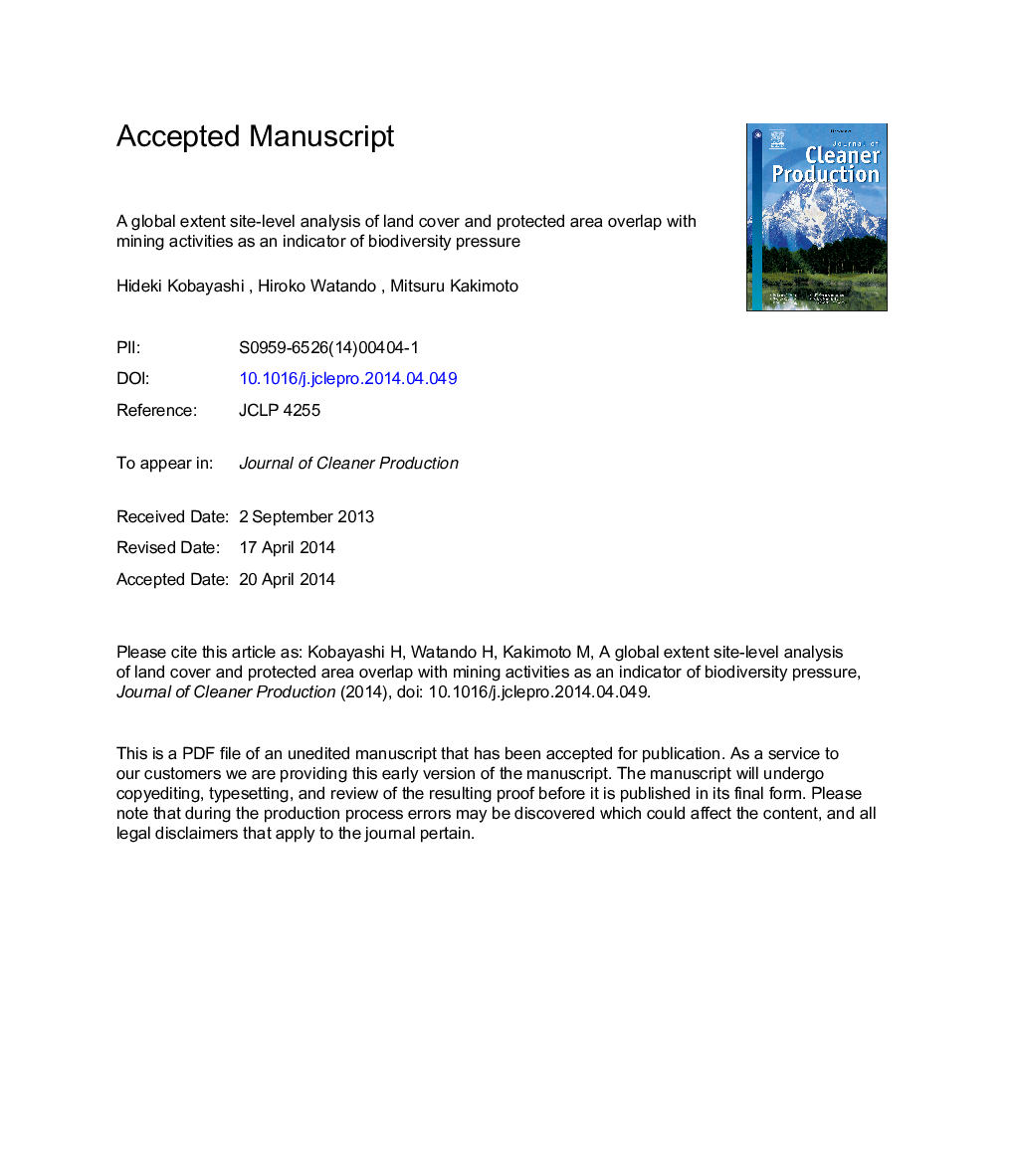| Article ID | Journal | Published Year | Pages | File Type |
|---|---|---|---|---|
| 8105661 | Journal of Cleaner Production | 2014 | 32 Pages |
Abstract
The need to ensure environmental sustainability is a critical challenge for humanity. The forces driving increased environmental pressure are world population growth, economic growth, and increasing urbanization. As a result, demand for base metals, such as iron and copper, used for producing industrial products and infrastructure has been rising. At the same time, biodiversity has ascended the global agenda because of its bearing on sustainability. Industry needs to take into account its impact on biodiversity in terms of product life cycles, from raw material extraction to product retirement. Despite the need to evaluate the influence of industry on biodiversity, a quantitative and practical biodiversity evaluation index has yet to be established. In this study, we focus on base metals that affect biodiversity through mining. This paper presents a new quantitative index, MiBiDTM, which is based on the geographic relationship among land cover, protected areas, and mining operations. Using available global databases, we developed the MiBiD intensity database, which covers over 700 mines of iron, copper, bauxite (aluminum), zinc, and lead around the world. Some findings achieved using the database are shown, such as that the MiBiD intensity of copper is much larger than that of any other mineral on average. Through comparison with existing indices, advantages and disadvantages of MiBiD are discussed. MiBiD is significant because it is the first site-specific global index of the pressure of mining on biodiversity, and it can provide new information for corporate management.
Related Topics
Physical Sciences and Engineering
Energy
Renewable Energy, Sustainability and the Environment
Authors
Hideki Kobayashi, Hiroko Watando, Mitsuru Kakimoto,
